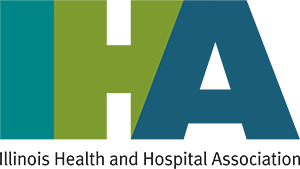Graham Health System
Providing Primary Care and Needed Medications in Rural Communities

Without the federal 340B drug pricing program, Graham Medical Group health and urgent care clinics in Williamsfield (population 575), Glasford (population 866) and Galesburg (population 29,255) wouldn’t exist. The program that began in 1992 requires pharmaceutical companies to sell medications at a discounted rate to healthcare providers like Graham Health System in Canton, a federally designated sole community hospital, which is smaller than other rural hospitals but provides comparable services at a higher average cost to the hospital.
The 340B program has meant residents in those communities outside of Peoria don’t have to “go without the primary and urgent care they need and deserve,” the health system said.
In addition to the three health clinics, Graham Health System has been able to offer comprehensive financial assistance, or charity care, to patients unable to pay for their healthcare. In Canton, where Graham Hospital is located, 14% of its population of 13,000 live in poverty. The poverty rate in Galesburg is almost 21% and over 14% in Glasford.
Healthcare providers participating in the 340B program serve predominantly low-income populations. Providers like Graham Health System take the money saved from discounted drug rates and invest it in patients and equipment to help keep medical care readily available in rural communities. Yet, like other hospitals and health systems, Graham has been subject to restrictions that drugmakers began imposing in 2020.
“The loss of 340B revenue from their actions is significant,” the hospital system said, noting its 340B savings have been around $4 million annually, which helps “maintain an operating margin that allows us to continue to remain independent and keep services in the rural communities that we serve.”
“We are a safety net provider in a rural area. Without us, our patients would need to travel 45 minutes or more for healthcare. Many don’t have the means or the resources to do so,” Graham Health System said.
The 340B program has been instrumental in Graham Health System consistently fulfilling its mission of ensuring patients receive the care they need at the time that they need it.
Now, facing the real risk of having to pull back on investments in patients, system leaders can foresee the consequences for patients: They would become sicker and could require more expensive inpatient hospitalizations. Such a result would create greater hardship on the healthcare system and every community Graham serves.

